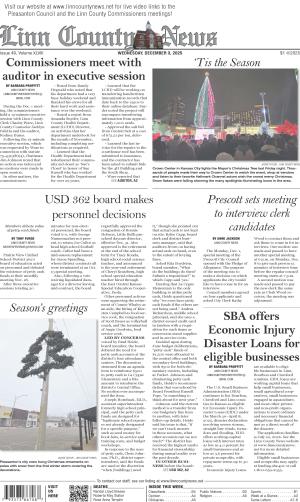Action Follows Thorough Evaluation of Available Safety, Effectiveness, and Manufacturing Quality Information by FDA Career Scientists, Input from Independent Experts
Today, the U.S. Food and Drug Administration issued an emergency use authorization (EUA) for the second vaccine for the prevention of coronavirus disease 2019 (COVID-19) caused by severe acute respiratory syndrome coronavirus 2 (SARS-CoV-2). The emergency use authorization allows the Moderna COVID-19 Vaccine to be distributed in the U.S. for use in individuals 18 years of age and older.
“With the availability of two vaccines now for the prevention of COVID-19, the FDA has taken another crucial step in the fight against this global pandemic that is causing vast numbers of hospitalizations and deaths in the United States each day,” said FDA Commissioner Stephen M. Hahn, M.D. “Through the FDA’s open and transparent scientific review process, two COVID-19 vaccines have been authorized in an expedited timeframe while adhering to the rigorous standards for safety, effectiveness, and manufacturing quality needed to support emergency use authorization that the American people have come to expect from the FDA. These standards and our review process, which are the same we have used in reviewing the first COVID-19 vaccine and intend to use for any other COVID-19 vaccines, included input from independent scientific and public health experts as well as a thorough analysis of the data by the agency’s career staff.”
The FDA has determined that the Moderna COVID-19 Vaccine has met the statutory criteria for issuance of an EUA. The totality of the available data provides clear evidence that the Moderna COVID-19 Vaccine may be effective in preventing COVID-19. The data also show that the known and potential benefits outweigh the known and potential risks—supporting the company’s request for the vaccine’s use in people 18 years of age and older. In making this determination, the FDA can assure the public and medical community that it has conducted a thorough evaluation of the available safety, effectiveness, and manufacturing quality information.
The Moderna COVID-19 Vaccine contains messenger RNA (mRNA), which is genetic material. The vaccine contains a small piece of the SARS-CoV-2 virus’s mRNA that instructs cells in the body to make the virus’s distinctive “spike” protein. After a person receives this vaccine, their body produces copies of the spike protein, which does not cause disease, but triggers the immune system to learn to react defensively, producing an immune response against SARS-CoV-2.
“Guided by science and data, the agency’s career staff determined that the vaccine’s known and potential benefits clearly outweigh its known and potential risks, and although not an FDA approval, the FDA’s expectations described in our June and October guidance documents have been met,” said Peter Marks, M.D., Ph.D., Director of the FDA’s Center for Biologics Evaluation and Research. “Today’s authorization demonstrates our steadfast commitment to the health of the American people, with the assurance that our scientific standards and the integrity of our review process have been maintained. This achievement is yet another testament to the dedication of FDA’s career scientists and physicians, who have been working urgently to conduct comprehensive and rigorous evaluations of the data submitted for vaccines to prevent COVID-19.”
FDA Evaluation of Available Safety Data
Moderna COVID-19 Vaccine is administered as a series of two doses, one month apart. The available safety data to support the EUA include an analysis of 30,351 participants enrolled in an ongoing randomized, placebo-controlled study conducted in the U.S. These participants, 15,185 of whom received the vaccine and 15,166 of whom received saline placebo, were followed for a median of more than two months after receiving the second dose. The most commonly reported side effects, which typically lasted several days, were pain at the injection site, tiredness, headache, muscle pain, chills, joint pain, swollen lymph nodes in the same arm as the injection, nausea and vomiting, and fever. Of note, more people experienced these side effects after the second dose than after the first dose, so it is important for vaccination providers and recipients to expect that there may be some side effects after either dose, but even more so after the second dose.
It is mandatory for ModernaTX, Inc. and vaccination providers to report the following to the Vaccine Adverse Event Reporting System (VAERS) for Moderna COVID-19 Vaccine: all vaccine administration errors, serious adverse events, cases of Multisystem Inflammatory Syndrome (MIS), and cases of COVID-19 that result in hospitalization or death.
FDA Evaluation of Available Effectiveness Data
The effectiveness data to support the EUA include an analysis of 28,207 participants in the ongoing randomized, placebo-controlled U.S. study who did not have evidence of SARS-CoV-2 infection prior to the first dose of vaccine. Among these participants, 14,134 received the vaccine and 14,073 received placebo. The vaccine was 94.1% effective in preventing COVID-19 disease among these clinical trial participants with 11 cases of COVID-19 in the vaccine group and 185 in the placebo group. At the time of the analysis of these 196 COVID-19 cases, none in the vaccine group and 30 in the placebo group were classified as severe. After the analysis of these 196 cases was completed, one severe case in the vaccine group was identified and is awaiting confirmation. At this time, data are not available to determine how long the vaccine will provide protection, nor is there evidence that the vaccine prevents transmission of SARS-CoV-2 from person to person.
The EUA Process
On the basis of the determination by the Secretary of the Department of Health and Human Services on Feb. 4, 2020, that there is a public health emergency that has a significant potential to affect national security or the health and security of United States citizens living abroad, and issued declarations that circumstances exist justifying the authorization of emergency use of unapproved products, the FDA may issue an EUA to allow unapproved medical products or unapproved uses of approved medical products to be used in an emergency to diagnose, treat, or prevent COVID-19 when there are no adequate, approved, and available alternatives.
The issuance of an EUA is different than an FDA approval (licensure) of a vaccine, in that a vaccine available under an EUA is not approved. In determining whether to issue an EUA for a product, the FDA evaluates the available evidence to determine whether the product may be effective and also assesses any known or potential risks and any known or potential benefits. If the product meets the effectiveness standard and the benefit-risk assessment is favorable, the product is made available during the emergency. Once a manufacturer submits an EUA request for a COVID-19 vaccine to the FDA, the agency then evaluates the request and determines whether the relevant statutory criteria are met, taking into account the totality of the scientific evidence about the vaccine that is available to the FDA.
NEWS
SBA offers Economic Injury Disaster Loans for eligible businesses

By BARBARA PROFFITT Linn County News linncountynewsreporter@gmail.com The U.S. Small Business Administration (SBA) continues to list Bourbon, Crawford and Linn counties in Kansas as eligible for Economic Injury Disaster Loans (EIDL) under the March 30–April... [More]
Commissioners meet with auditor in executive session

During the Dec. 1 meeting, the commissioners held a 15-minute executive session with Linn County Clerk Chasity Ware, Linn County Counselor Jacklyn Paletta and the auditor, Rodney Burns. Following the 15-minute executive session, which was requested by Ware in connection with... [More]
USD 362 board makes personnel decisions

Members debate value of petty cash funds Prairie View Unified School District 362’s board of education acted on personnel and debated the existence of petty cash funds at their monthly meeting Nov. 18. After three executive sessions totaling 30 minutes for... [More]
More News
- USD 362 leader apprises board of taxing mistake
- Commissioners briefly discuss mill levy error for USD 362
- Marion County agrees to pay out $3M for newspaper raid, expresses regret
- Parker City Council looks at roof bids, other motions
- Schneider and Secrest chosen as Teacher of the Year
- P&Z commission meets for workshop on battery storage and data centers
- Wills appointed fourth councilman for Pleasanton
- Write in votes upset some races after final tally
SPORTS
Prairie View football has 10 players make the All Pioneer League team

The Prairie View football team was well represented in this year’s All Pioneer League team. The Buffalos had four players on the first team, three on the second team, and four on the honorable mention team. To see the full article, check out this week's edition... [More]
Dawson signs with Pitt State

SUBMITTED PHOTO Jayhawk Linn senior Brea Dawson, joined with coaches and family, signs to the Pittsburg State University track and field team. Back row: (left to right) Jeff Dawson, DeAnn Dawson, Kate Strader, Taylor Snyder. Front row: (left to right) Shayla Long, Brea Dawson,... [More]
Hume teams lose openers, prepare for league tourney

High school basketball might still be nine days away for the three Linn County high schools, but the season is already underway for state-line neighbor Hume, Mo. The Hornet teams began their season last Friday with home losses to Wheatland, Mo., the girls in a tight 48-40 match,... [More]
More Sports
- Jayhawk and Pleasanton football has a big presence in All League selections
- Linn County Rodeo contestants compete at the upcoming Prairie Circuit Finals
- Loss of seniors contributes to Buff regional loss to end season
- Pleasanton fall trapshooting finishes fourth in conference
- Blu-Jay season ends with bi-district loss
- Prairie View football moves to the Regional round with a big win against Burlington
- Jayhawk cross country competes at State
- Prairie View cross country qualifies two for State
COMMUNITY
A piece of Prescott’s history

Elevator razed Last week the Burlington Northern- Santa Fe Railroad Co. (BNSF) took down the old grain elevator and storage bins at Prescott, taking with it a large piece of history that touched several families in the community. Originally, it was built by members of the Norbury... [More]
Dream Aesthetics, Mound City, fulfilling a dream

Life is a series of twists and turns and for Dream Aesthetics owner, Rhonda Kellstadt, it took her into self-employment and happiness in life. Many know Kellstadt from her many years working as a nurse practitioner with Mercy Health, transitioning to CHC/SEK in Pleasanton;... [More]
Holiday food drive distributions this weekend

Besides the food pantries located across Linn County, individual entities are collecting food for distribution, two of them this weekend. The first is a food drive organized by the First Christian Church in Pleasanton, 603 N. Main, with distribution of food items scheduled... [More]
More Community
- Prairie View FFA team places well at national Ag Mechanics competition
- Heartland awards $5,000 to Linn County Fair Association for fairgrounds intercom system
- Like father, like sons
- Mound City Community Garden
- Kelley honored - Instructor of the Year
- A few things to know about football
- First Aid: your safety toolkit
- Hydroponic towers provide fresh produce for lunches at JES


